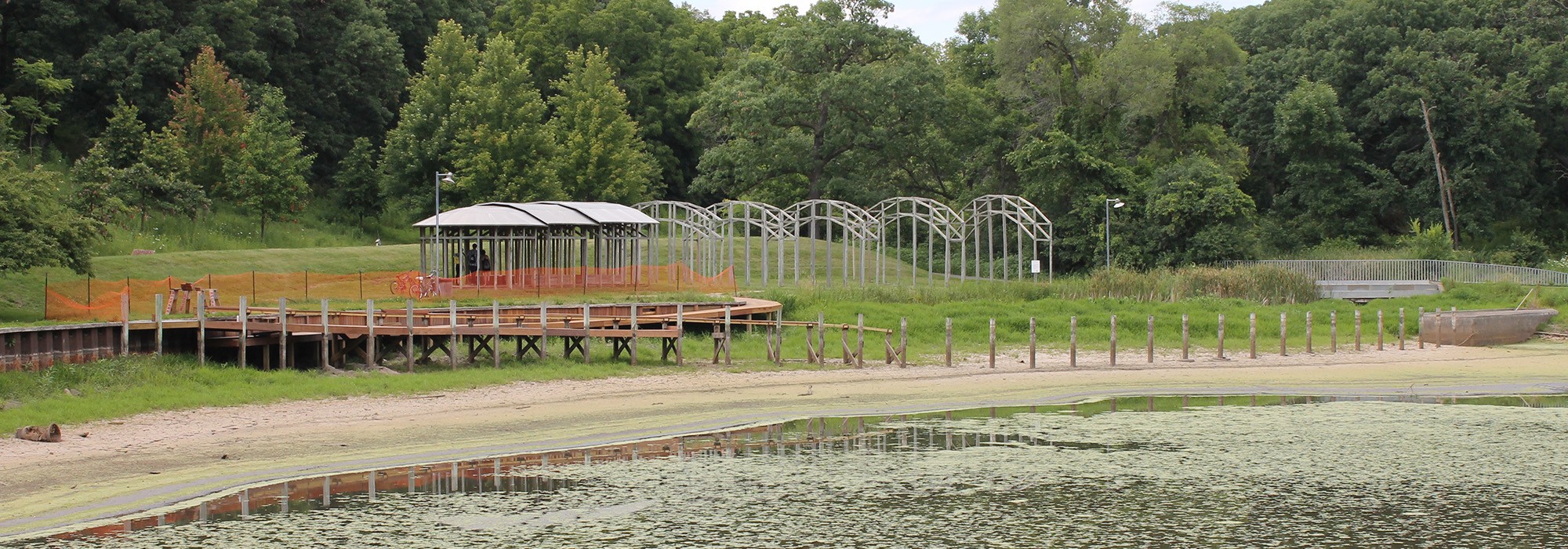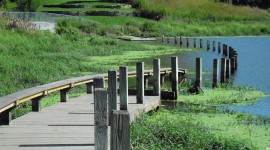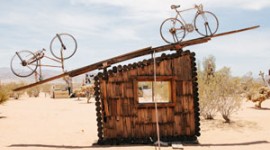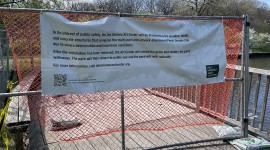Jana La Brasca, Art Historian, Writes in Support of "Greenwood Pond: Double Site"

On May 1, 2024, Jana La Brasca wrote the following letter to the Des Moines Art Center (DMAC) Director Kelly Baum concerning plans to demolish Greenwood Pond: Double Site, a site-specific installation by the internationally acclaimed leader of the land art movement, Mary Miss, commissioned for the Art Center’s permanent collection. The work, which opened in 1996, is in a diminished condition with some sections fenced off, suggesting the DMAC has not fulfilled its contractual obligation to “reasonably protect and maintain” the work. The Cultural Landscape Foundation (TCLF) is calling for the DMAC to reverse it demolition decision and, instead, to engage in meaningful consultations with the artist and others to find a solution that restores the artwork and develops a long-term, ongoing maintenance plan.
Dear Ms. Baum,
I write to join the chorus of voices urging you to rethink the Des Moines Art Center’s decision to demolish Mary Miss’s Greenwood Pond (Double Site). Like them, I want to live in a world where this important work continues to exist and inspire.
I am writing to you as a researcher and doctoral candidate in art history with a particular interest in land art and its legacies. In the process of learning male-dominated canons of art history during my studies to date, it took far too long for me to learn about the art of Mary Miss. The same is true for so many of her fellow travelers, some of whom have also written to you in support of protecting Miss’s work: Alice Aycock, Jody Pinto, Jackie Winsor, Elyn Zimmerman, to name just a few. As you pointed out in your open letter of February 3, and as I learned while working on the exhibition and book Groundswell: Women of Land Art, works of land and public art require careful stewardship. In the process of researching that exhibition, Curator Leigh Arnold and I encountered far too many accounts of land and public artworks, commissioned with the promise of permanence, that have been cared for in less-than-ideal ways, ranging from banal neglect to willful destruction. From our project’s perspective, the issue seemed especially acute in cases of projects by women artists.
Based on these findings, I wrote an essay called “The Paradox of Permanence” that was published in a recent special issue of the journal Public Art Dialogue “On the Nature of Sculpture Parks” (attached here should it be of interest). In it, I discuss the inherent visibility gap between permanent and ephemeral works of art outdoors: while permanent installations are readily visible in the physical world, temporary ones require more of a viewer, who might seek them out in books and archives, where they are discoverable, even if sometimes hard to find. My focus in “The Paradox of Permanence” is not so much on preserving threatened landscapes, as The Cultural Landscape Foundation so thoughtfully and valiantly does, but on problematizing the binary of ephemeral and permanent that can prevent scholars from writing equitable and accurate histories of art in the land. As artist Donald Judd wrote on the idea of permanent installation in 1984, “The art and architecture of the past that we know is that which remains.”
In what form(s) will Miss’s Greenwood Pond (Double Site) remain, so that it can continue to be known? To me, it seems that the DMAC has an opportunity here to expand and continue to deliver on Miss’s original idea of the demonstration wetland as a site of social and ecological engagement. The institution also has an opportunity to collaborate with the artist, who is as vital and visionary as ever. Current and future generations of artists and scholars are watching: how will the DMAC lead in forging sustainable, conscientious, and above all, creative solutions to the environmental, social, and artistic issues that Miss’s project so eloquently highlights?
Most sincerely,
Jana La Brasca
< Back to the Greenwood Pond: Double Site Support Letters Page |







